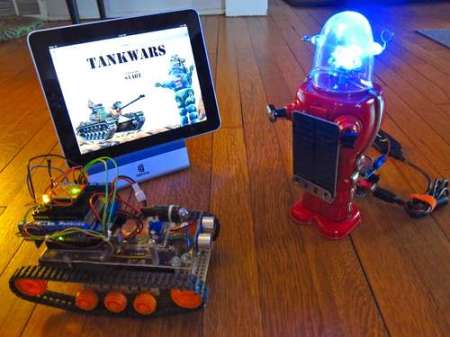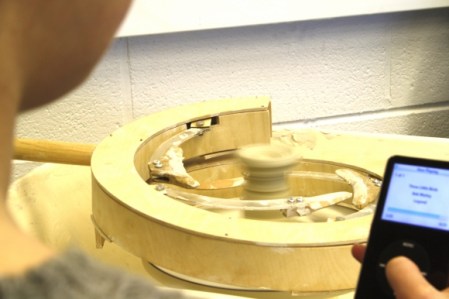
[Joe] sent us an email to show off his latest build. Tank Wars is the beginning of a video game/robot hybrid. You control the tank via an iPad, telling it where to go and how to fire. You have real life targets, in this case another robot. When you hit your target, the interface is updated with game stats. Currently, this is only a step past being a wifi controlled robot. [Joe] is working on making the game part of it a little more interactive.
The tank and the target are both run by Arduinos with RN-XV WiFly modules. The tank has obstacle avoidance both forward and backward, which, from the video, seems like it might make navigating a bit challenging at times. The iPad interface is just a web page, so it could really be used on any device. This is pretty cool, we can’t wait to see how he proceeds from here.
Continue reading “Tank Wars: A Video Game Controlling A Physical Bot”




![amazingbox2[1]](http://hackaday.com/wp-content/uploads/2012/04/amazingbox21.jpg)











